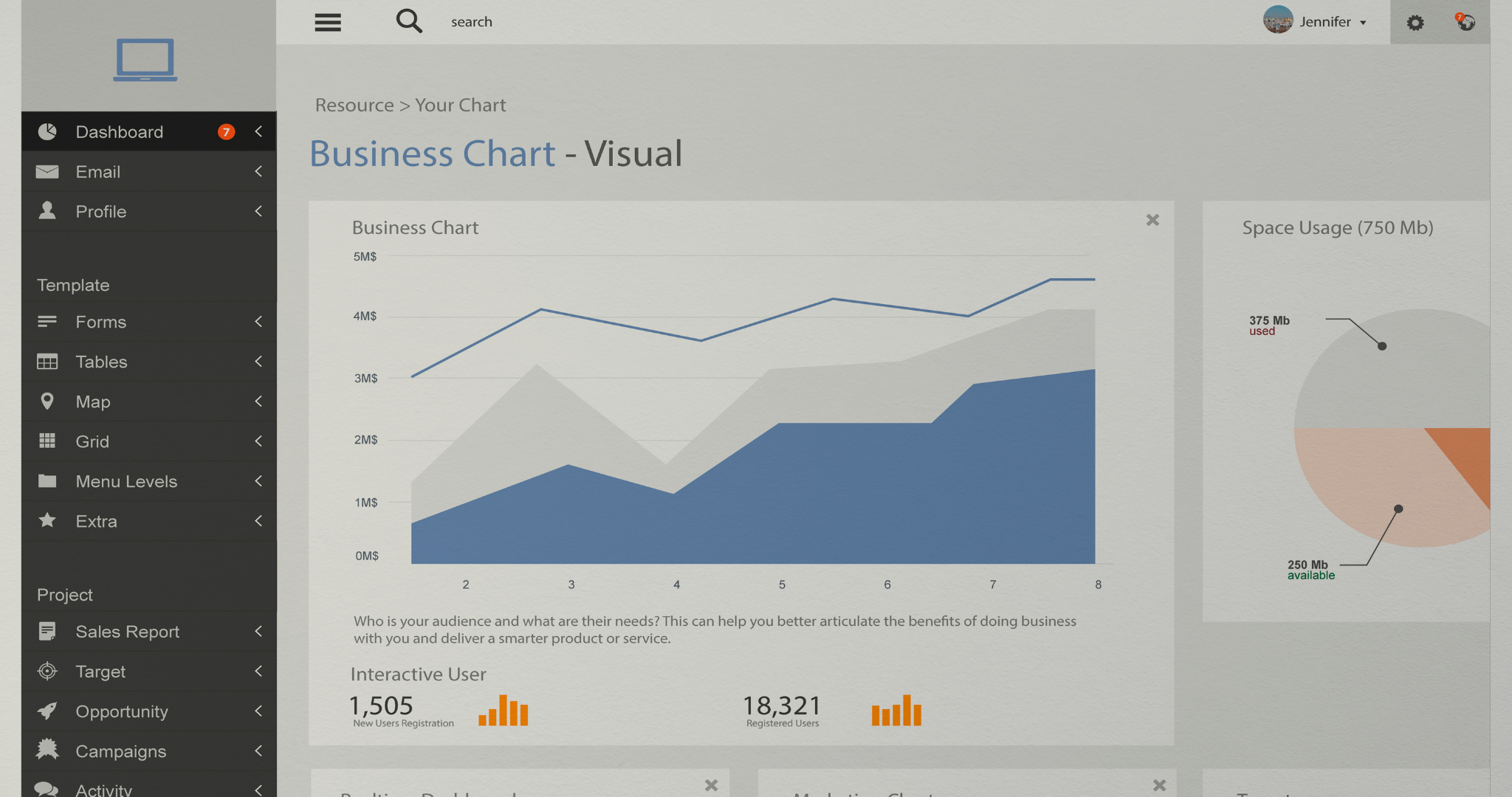What Is Power BI and Which Problems Does It Solve?
In the modern business world, organizations often handle massive amounts of data from CRMs, ERPs, social media, advertising platforms, and more. Analyzing this data can become time-consuming due to the diversity of sources and formats. This is where Microsoft Power BI comes in—an excellent tool that centralizes your data and visualizes it in easy-to-understand dashboards and reports.
Core Power BI Features
Data Collection and Preparation
You can connect various data sources (Excel files, cloud services, databases, web applications) and quickly cleanse and structure them for analysis.
Visualization
Power BI offers a wide array of charts, graphs, tables, and maps, making it easy to showcase key metrics for managers and analysts to review.
Automatic Updates and Dashboards
Thanks to scheduled data refresh, your dashboards stay up-to-date, eliminating the need for manual data exports from different systems.
Collaboration and Accessibility
Analytic results can be shared with colleagues, published to the web, or accessed via mobile apps, expediting decision-making and increasing transparency.
Common Issues Power BI Solves
Data Fragmentation
When information is scattered across multiple Excel sheets or different software, Power BI setup services consolidate everything into a single interface.
Slow Analysis
With quick and straightforward creating Power BI dashboards, you can reduce the time from data collection to actionable insights.
Inaccurate Forecasts
By leveraging historical data and correlations, the platform improves analytics and forecasting for sales or expenses, so order Power BI business analytics to make more data-driven decisions.
Integration Challenges
If you already have a CRM or ERP, integrating Power BI and CRM makes data analysis much more convenient, and Power BI service costs quickly pay for themselves through automation and resource optimization.
Limited Report Access
Power BI lets you view reports from any device, share dashboards with your team, and configure user permissions. This speeds up communication and prevents redundant efforts.
A Use Case Example
Imagine a small online store operating in several regions and using multiple advertising channels. Before ordering Power BI implementation, the owner had to manually analyze Excel files and data from Facebook or Google Ads. After implementing Power BI, they gained a unified control panel displaying ad expenses, leads, product shipments, and financial indicators in real time. This enabled quicker budget adjustments for ads and identification of the most profitable sales channels.
Benefits for Businesses
Faster Decision-Making: Reporting and metrics are available at a click.
Cost Reduction: Less time and resources spent on manual data processing.
Forecasting and Planning: Historical data analysis allows more accurate risk assessment and budgeting.
Flexibility: The platform is scalable and continually improving, and Power BI consulting price is often lower than potential losses due to inefficient management.
In short, Power BI is a versatile tool that helps companies of any size and sector work more efficiently by providing convenient data visualization and in-depth analytics. If constant metric monitoring, quick market response, and risk reduction matter to you, consider Power BI data analysis as one of your first steps toward digital business transformation.
March 28, 2025
Popular ERP Platforms: A Brief Overview of OneBox OS, LBS Cloud, and Odoo
Modern ERP solutions offer various features and approaches to implementation. Learn how OneBox OS, LBS Cloud, and Odoo differ, and discover which one best suits your business needs.
Overview of Popular CRMs: KeyCRM, NetHunt, Zoho, Pipedrive, Uspacy
The market offers numerous CRM platforms with different functionalities, price points, and implementation approaches. Learn about the key features of popular solutions to choose the best option for your small or medium-sized business.
5 Key Advantages of Chatbots on the SendPulse Platform
Chatbots on the SendPulse platform enable a quick start without deep technical expertise, offer ready-made integrations, and have a low entry barrier to automation. They are an ideal tool for small and medium-sized businesses looking to communicate with customers around the clock, efficiently and effectively.
How to Unite CRM, ERP, Chatbots, and Marketing Tools into a Single Ecosystem
Integrating CRM, ERP, chatbots, and marketing solutions allows businesses to optimize key processes—from sales and customer service to analytics and automation. With a comprehensive ecosystem, you strengthen each area and simplify resource management across the board.


